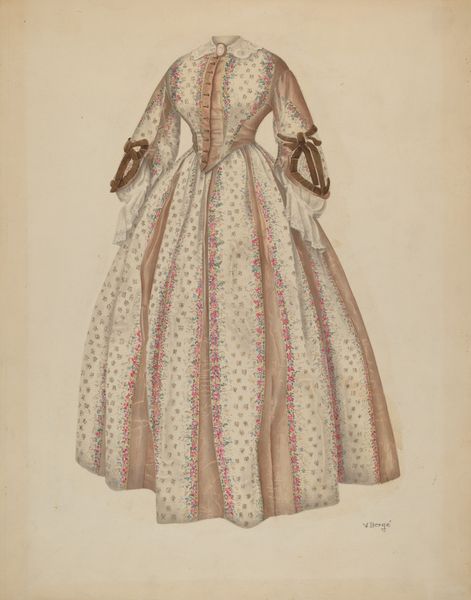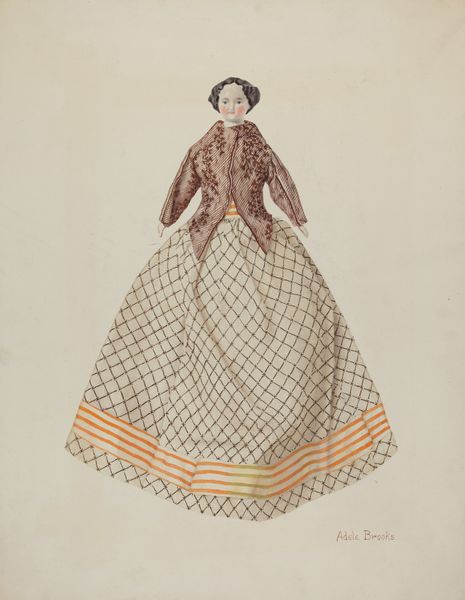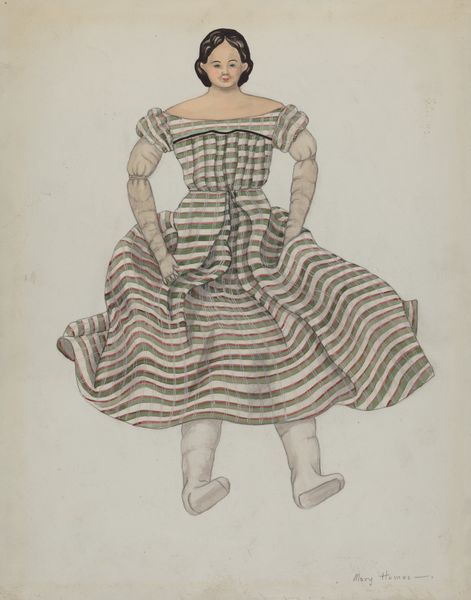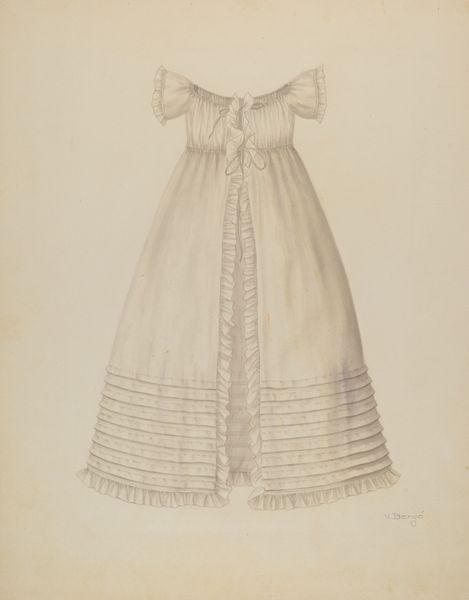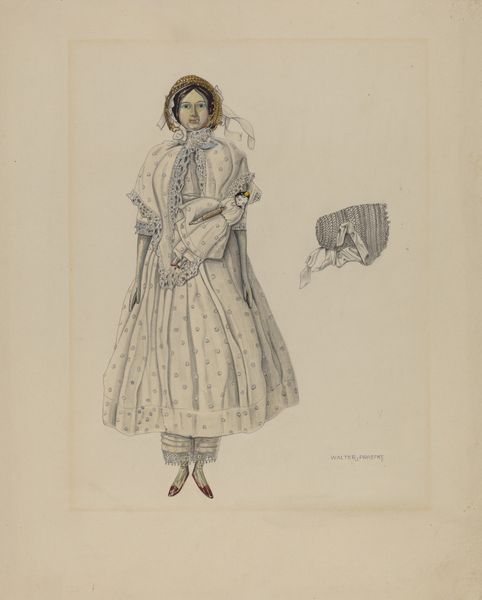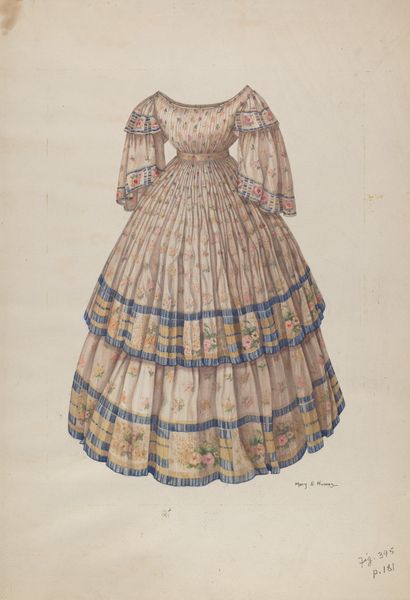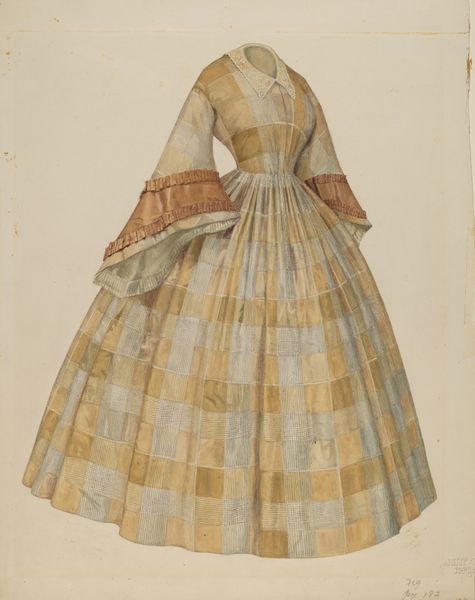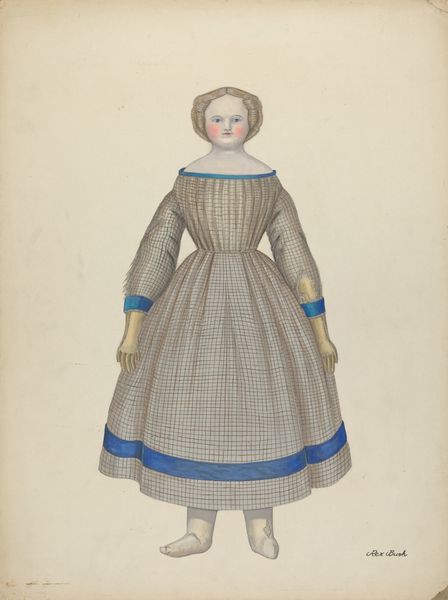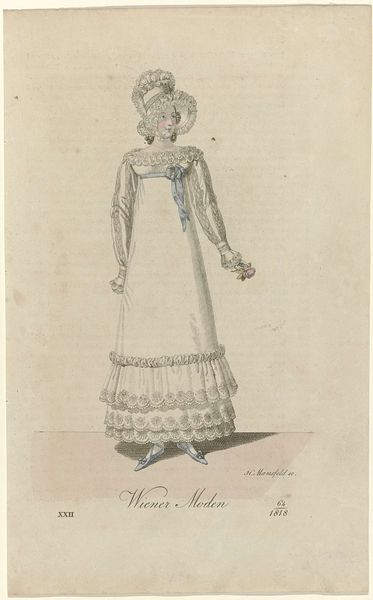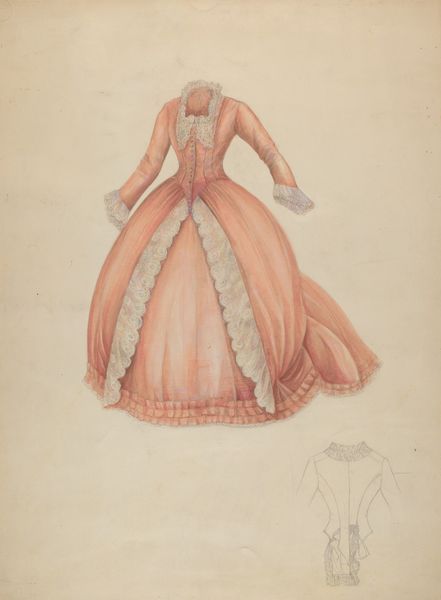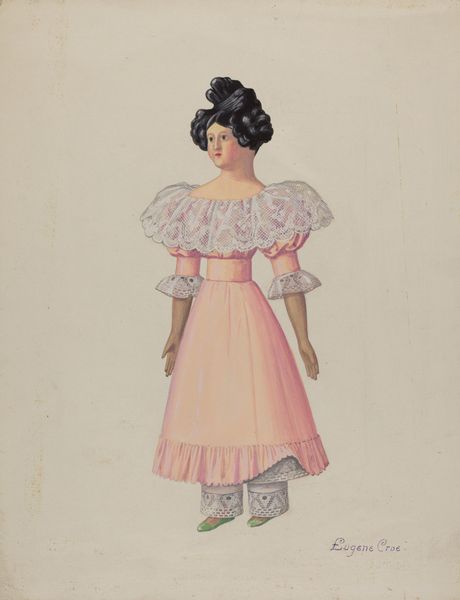
drawing, watercolor
#
portrait
#
drawing
#
figuration
#
watercolor
Dimensions: overall: 35.7 x 28 cm (14 1/16 x 11 in.)
Copyright: National Gallery of Art: CC0 1.0
Curator: This engaging work before us is "Doll - 'Ann Blairs'," dating to around 1936, created by Mary E. Humes using watercolor and drawing techniques. Editor: Immediately, there's an unsettling quality here. That direct, almost accusing gaze and rigid posture suggest more than a simple childhood plaything. It feels loaded, even confrontational. Curator: The doll's representation offers a fascinating intersection of childhood and societal expectations. Consider the carefully rendered dress and delicate features versus the unnervingly stiff presentation. What dialogues might arise concerning gender performance and imposed roles for young women within that specific era? Editor: And the brown segmented arms, almost detached—they suggest ideas about brokenness, repair, perhaps the fragmented self within a patriarchal society? Furthermore, are the rosiness of the cheeks intended to imply youthfulness, or is there a violence there in their stark artificiality? Curator: Humes' choice to portray the doll with such detail demands attention to its socio-cultural place. Dolls are rarely just toys; they become vehicles for instruction and aspiration. Her somewhat simplified aesthetic and stark representation invites critical examination on how these expectations get embedded early in childhood. The artwork also presents an avenue for a more intersectional exploration on issues related to women. Editor: Absolutely. It speaks to the doll's existence within a capitalist society—objects burdened by assigned significance. And let’s remember how museums like this one shape the stories we tell around these artifacts, and the messages about beauty or behavior they subtly endorse. Is there any record about Mary Humes that help us ground the origin or context of her rendering of this particular doll? Curator: Details surrounding the artist are scant, unfortunately, making her intentions open to interpretations framed within these theoretical paradigms. In essence, the ambiguity contributes to its enduring capacity for inspiring dialog and reflection. Editor: Well, looking closer, the stark contrast makes me reassess its sense of vulnerability—perhaps not accusation, but a plea for visibility, which also offers a fresh way of exploring objectification within art and wider societal framework. Curator: Indeed. These shifts in perception highlight art’s active participation within the cultural milieu, serving not merely as record, but provocation and hopefully progress.
Comments
No comments
Be the first to comment and join the conversation on the ultimate creative platform.
